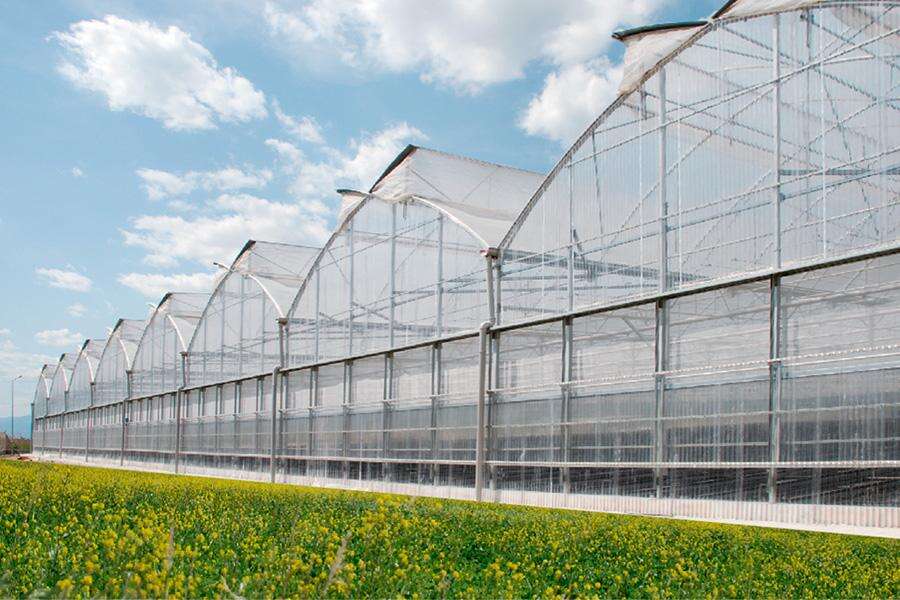בחקלאות של ימינו, חממות מסחריות משיגות פופולריות שכן הן מאפשרות ל cultivators לשלוט באור, חום ו לחות לאורך השנה. עם זאת, כדי להפוך אותה לרווחית, נדרשת תכנון זהיר. המדריך הזה מוביל אתכם דרך השלבים המרכזיים – בחירת אתר, עיצוב המבנה, התקנת בקרת אקלים, ובחירת גידולים מתאימים.
בחירת אתר
בחירת המיקום הטוב ביותר ללהט שלך היא עמוד השדרה של כל פרויקט. חפשו שדה שמקבל אור שמש ישיר וברק מהבקר עד הערב, גם בחורף. השאירו את המבנה מוגן מרוחות חזקות, ודא שמקור מים נקי נמצא בקרבה. גם גישה לכביש הוא חשוב; משלוח מהיר שומר על הפקולטה טרייה ועל הלקוחות מרוצים. לבסוף, השאירו מקום נוסף למקרה שתרצו להרחיב בהמשך. מיקום חכם חוסך בעלויות אנרגיה ועוזר לצמחים לצמוח חזקים ומהירים יותר.
שיקולים בעיצוב להט
לפני שמבנים חממה, שאלו את עצמכם אילו צמחים תציבו בה. מבנים שונים — בתים זכוכיתיים, קשתות עמידות מפוליקרבונט או קשתות פשוטות וגבוהות — מתאימות לגידולים ואקלימים שונים. זכוכית מספקת אור רב אך יכולה להפוך לבלוק חום; פנלים מפוליקרבונט שומרים על החום לאורך זמן; קשתות מתקררות מהר אך זולות יותר להתקנה. בחרו בעיצוב חד-קווי אם המרחב מצומצם, או דגם מרובה קווים אם אתם רוצים זרימת אויר טובה יותר ורחבת. תכנון מיטבי ימנע טפילים, יניע אויר עם פחות מנחות, ויכניס כל שתיל במרחבי הרצפה הזמינים.
מערכות שליטה סביבתית
צמחים צומחים בצורה הטובה ביותר כאשר הטמפרטורה, הרطوبة והאור אינם משתנים באופן דרמטי - וזה דורש ציוד. שלטת בקרה אמינה מקשרת מנורות, חיממים ותריסי צל לתוך מערכת אחת, מפעילה רק כשצריך וחותכת את חשבונות האנרגיה המיותרים. טיימרים וחיישנים קוראים את התנאים מהר יותר מרוב מגדלים, ומאפשרים לך להקדיש את הזמן שלך לדברים שחשובים באמת. הוסף מנורות חימום ב الليילות הקפואות, מנורות פליטה לרעפים של הקיץ, ותריסים אטומים במהלך השמש הקשה. לרמת ביטחון נוספת, חבר את כל המערכת לסמארטפון, כדי שתוכל לבדוק או להתאים את הח greenhouse גם כשאתה יושב על הספה או בדרכך למשהו.
בחירת וניהול גידול
בחירת הצמחים הנכונים ללהט שלך יכולה להפוך את העסק שלך או להרוס אותו. התחילו בכך שתגלו מה הקונים באזורכם רוצים, ואז התאימו את הטעם הזה לצמחים שצומחים היטב בפנים. שאלו את עצמכם כמה זמן לוקח כל צמח לצמוח, כמה מזון ומים הוא צריך, והאם הוא מתגונן מפני מזיקים נפוצים. שימוש בסיבוב יבולים ובשיטות שליטה במזיקים ישמור על הקרקע בריאה ועל הקציר יציב. תישארו בקשר עם דוחות שוק כדי שתוכלו להתאים את הרפרטואר שלכם לפני שהביקוש ישתנה.
תכנון פיננסי ותקציב
תוכנית כספים מוצקה היא עמוד השדרה של כל יזמת חממה. התחילו ברשימת הוצאות הפעלה, חשבונות חודשיים ויעדי מכירה סבירים, כך שכל שקל ישמש למטרה. בדקו את התקציב בקביעות כדי לאתר בזבוזים לצמצם הוצאות מבלי לפחית מהאיכות. מענקים, הלוואות בריבית נמוכה ותכניות חקלאיות מקומיות יכולות לספק את המזומן הנוסף שאתם צריכים בהשקה, אז שאלו שאלות. לבסוף, סקירות חודשיות קצרות של ההכנסות וההוצאות ישמרו על שליטה ויאפשרו לפעול במהירות מול הזדמנויות חדשות.
מגמות ותהליכים בתעשייה
סצנת החממות המסחריות משתנה במהירות, ושני גורמים עיקריים הם טכנולוגיה ודחיפה לשיטות ירוקות יותר. מערכות היי-טק כמו חוות אנכיות ומערכות הידרופוניות משתמשות בפחות קרקע ומים ועדיין מגדלות יבולים מעולים, כך שיותר מגדלים מנסים אותן. במקביל, קונים רוצים מזון שגודל בקרבת מקום וללא כימיקלים, מה שדוחף מפעילי חממות לשנות את שיטותיהם. מעקב אחר מגמות אלו עוזר לכם לתכנן בצורה חכמה יותר ונותן לעסק שלכם סיכוי טוב יותר להישאר רווחיים.


